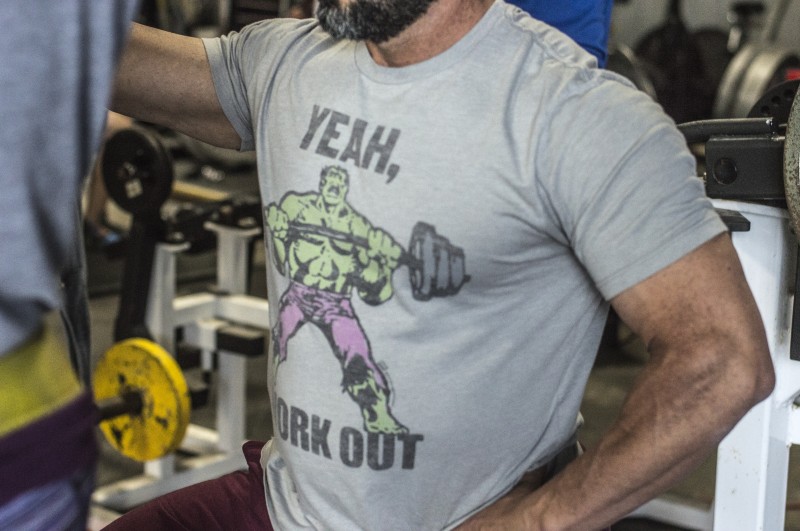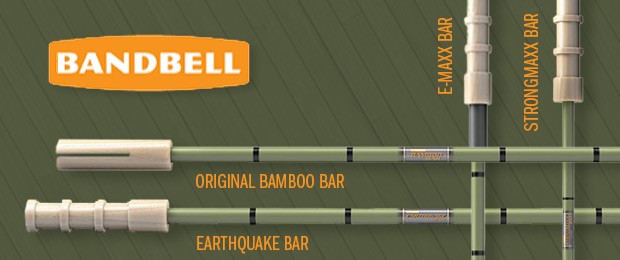
In my article “Novel Stimulus or Stupid Human Trick?” I offered a five-point checklist to help determine if a new exercise of exercise variation was worth the time to explore. In this follow-up, we’ll look at a few I’ve found to meet these criteria and have been staple tools in many training repertoires, my own included.
Bottoms-up Kettlebell Presses and Armbars
Take any KB press and perform it with the weighted end balanced above your hand.
- Does it Have a Differentiating Aspect?
By performing various KB presses with the bottom up and gripped unstably in the hand, you turn a prime mover lift into a safe shoulder stability exercise. The degree of instability is greater than similar dumbbell and ring movements, requiring strong co-activation of the hand/forearm muscles as well as the centering shoulder muscles. And unlike single-joint lifts like external rotations, it trains the target muscles as part of a more relevant movement pattern.
- Is it Amenable to Different Body Types?
If you can use dumbbells, you can use kettlebells.
- Is it Variable?
The technique can be used with any press or overhead hold that can also be performed with dumbbells.
- Does it Go Easy on Common Lifting Aches and Pains?
This is a very low-load exercise that can give beat-up pressing muscles and tendons a break. For the cases where even less movement is desired, armbar variations where the KB is locked overhead and either the body moved around it or the shoulder twisted can reduce the impact even further.
- Are Failed Lifts Relatively Safe?
For most people, a failed lift only means a kettlebell smack to the forearm. Folks with hypermobility issues will need to exercise a little more caution when approaching failure (which should be sparing and thoughtful for a rehab/pre-hab lift like this), but the difference between this and normal dumbbell work is minor.
Suspended Prone Knee Raises
These are Mountain Climbers with a mean streak. Lean into a set of Blast Straps like you’re doing a pushup, but instead of moving your arms, keep your torso rigid while doing slow, alternating sets of knee raises to your abdomen.
- Does it Have a Differentiating Aspect?
This lights up the lower abdominal muscles with a degree of complexity and intensity that’s hard to duplicate with traditional leg/knee raises.
- Is it Amenable to Different Body Types?
If you can lower yourself into Blast Straps, you can do this.
- Is it Variable?
The straps can be raised or lowered for different stimuli, and the movement can be performed with the hands on a stable elevated surface (a box or stacked aerobic steps) as a regression.
- Does it Go Easy on Common Lifting Aches and Pains?
The only thing to really watch for is any compressive back pain associated with the great amount of abdominal force being created.
- Are Failed Lifts Relatively Safe?
Yes. Failure occurs when you can’t complete one raise of the leg; when the leg settles, you’ll be in a stable four-point position.
Pallof Press
One of the creator-named exercises that is worth trying. Set a pulley at stomach height, fix a D-handle to it and grab with both hands, take a step away from the cable station into a straddle stance, and press the handle away from your stomach and back for one rep. The press creates a variable isometric stress on the obliques.
- Does it Have a Differentiating Aspect?
The subtle action of the press creates a unique increase in tension that’s hard to duplicate with other types of ab work.
- Is it Amenable to Different Body Types?
Most people will have no problem at all with the movement.
- Is it Variable?
In addition to the usual elements of load and duration, altering your stance width and alignment can change the biomechanics of the lift.
- Does it Go Easy on Common Lifting Aches and Pains?
This is a back-sparer (unlike side bends) and doesn’t create pressure points on the arm like side bridges do. The biggest stress can actually be the press action, though for most people the load is a fraction of what their bench press would be so it’s not a problem.
- Are Failed Lifts Relatively Safe?
There’s no free weight to drop on failure and no likely action to create a serious injury in the movement itself, so it’s a safe lift. People new to the exercise will want to mind their balance when finishing the set, but it’s a minor concern.
Presses With an Unstable Bar
This involves pressing a flexible bar—such as a bamboo or Tsunami bar—or with a bar featuring unstable elements—such as band-suspended weights hanging from the sleeves.
- Does it Have a Differentiating Aspect?
Many lifters have found that grooving the bench press with an added element of instability improves tightness and strength off the bottom without completely breaking from ideal form.
- Is it Amenable to Different Body Types?
If you can press, you can do this.
- Is it Variable?
In addition to all the variations afforded to the usual barbell presses, the bar’s instability can be varied by load either innately (a flexible bar’s varying response to load and movement) or externally by modifying attached weights.
- Does it Go Easy on Common Lifting Aches and Pains?
The combination of lighter load and perfect technique make it easier on elbows and shoulders than the usual barbell press.
- Are Failed Lifts Relatively Safe?
I would say it’s no different than the regular bench press, in that the main safety factor is being smart, i.e., unlike the first three lifts, you can stupid yourself into dropping a max bench attempt on your throat and end up dying slowly and alone in your garage. That said, if there is a failure in the lift, the lighter loads and different technique might make it safer than a failed traditional bench or overhead press.
You’ll notice that these are stabilizer-focused lifts—that’s a common theme in sussing out the value of new lifts as well as old ones that have been rediscovered. Core lifts and beach lifts have been hammered on for a century, while our understanding and focus on stabilizers is much newer, so it’s easy to see why this is the case. That isn’t to say that there aren’t tricks out there for old standbys—Meadows Rows come to mind—but they’re in the minority for sure.











